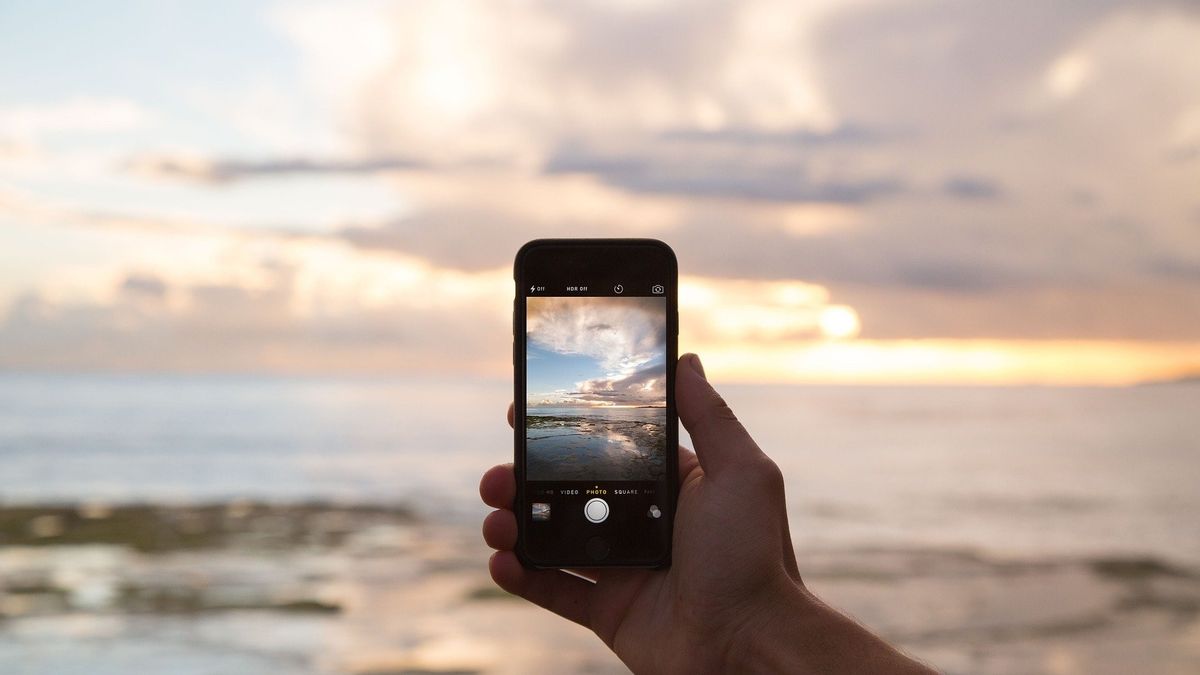JAKARTA - The answer is of course yes. Given that a number of cellphone vendors are competing to present smartphones with high-resolution cameras, resulting in photo shots that are no less than digital cameras.
Although not in all aspects, the ability of cellphone cameras has now narrowed the distance between cellphone cameras and digital cameras. Call it several vendors such as Xiaomi, Huawei and even Samsung have managed to pin a camera lens with a size of up to 108 megapixels (MP).
This term is known as the megapixel race, in which a number of smartphone manufacturers are competing to deliver capable camera capabilities. Even though it has a greater resolution, it turns out that the resulting image detail still cannot match a digital camera.
That's because the sensor used is too small than a DSLR or mirrorless. So that in the same light conditions, the noise produced by a cellphone camera will be seen more clearly than a digital camera.
But over time, it seems that cellphone manufacturers are starting to realize that in hardware, cellphone cameras are difficult to be side by side with digital cameras. Apart from the physical size of the sensor and camera lens which is difficult to pin into the size of the cellphone which is now required to be thin.
Therefore, cellphone vendors have begun to switch to developing computational photography capabilities, aka processing or computing-based photography. With this technique, cell phones can produce photo shots with the same quality that can even compete with digital cameras.
Of course, the features of this camera cannot be obtained from a digital camera because it requires a choice of lenses and sensors that are tailored to your needs.
Bokeh or Portrait ModeDigital cameras and DSLRs are blessed with large sensor sizes as well as optics with wide aperture openings. The combination of the two can present a blur or bokeh effect.
The bokeh effect is almost impossible to achieve with the hardware in the cellphone camera. To present this effect, vendors are starting to compete by adding two or more cameras on the back of the cellphone. Where one lens is used to take pictures and the other is to map space (3D depth information).

But the surprise came from Google. Instead of using two cameras to distinguish the subject from the background, Google has developed an artificial intelligence (AI) that can separate the subject and the background, creating a smooth and natural blur effect. This capability is embedded in the first smartphone models made by Google, namely the Pixel Series 1,2 and 3.
Night ModeIn dark light conditions it has become a big enemy, for digital cameras, let alone cellphone cameras. The small size of the cellphone camera sensor will certainly produce more noise than the digital camera sensor in the same lighting conditions.
Even so, these limitations do not prevent cellphone manufacturers from looking for alternative solutions. Take for example Huawei with the Night Mode feature, which allows cellphone cameras to combine multiple photos at the same time with the same scene, resulting in bright, clear and noise-free images.

These features are starting to be embedded in high-end phones, with more lenses and camera sensors embedded. However, there are still those who use a single camera with digital computing support in the image processing.
Super Hi-Res Zoom and Deep FusionIn addition to the small size of the camera sensor, sometimes the detailed image produced by a cellphone camera is far less than that of a digital camera sensor. Based on that problem, a number of vendors like Apple designed the Deep Fusion feature embedded in the iPhone 11 series.
Deep Fusion leverages the processing power of Apple's A13 bionic processor, and uses artificial intelligence (AI) to produce high-detail photos. For Android mobile devices, Google also has a similar feature called Super Hi-Res Zoom.

As the name implies, this feature is useful for increasing detail or resolution, but only in a zoom state. Moreover, many cellphone cameras do not have optical zoom.
Technically, the Super Hi-Res Zoom feature falls into the digital zooming category. Where this feature combines multiple images at once to achieve photos with better resolution.
So in conclusion, in some aspects, cellphone cameras are comparable, or if you could say even better than digital cameras (DSLR or mirrorless). Even so, there are some professional camera functions that still can't be replaced by cellphone cameras.
The English, Chinese, Japanese, Arabic, and French versions are automatically generated by the AI. So there may still be inaccuracies in translating, please always see Indonesian as our main language. (system supported by DigitalSiber.id)









